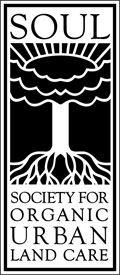2021 Greener Greenspace Profile
Little Forest Wolfe Island/Kawehnóhkwes tsi kawè:note
Created by a group of volunteers and supported by the wider community, the Little Forest Wolfe Island/Kawehnóhkwes tsi kawè:note* is a regenerative forest initiative located on the grounds of the Wolfe Island Community Centre near Kingston, Ontario.
Design and Process to Create the Little Forest In the spring of 2021, in an area where there has only been mowed turf for many years, volunteers prepped the soil in order to receive 300 saplings. Using a no-till method, the soil biology was increased with a layered approach of old hay, composted manure and chipped wood. The planted species comprised of 40 different native tree and shrub species representative of the Upper St. Lawrence Temperate hardwood forest and some Carolinian species in order to assist tree species migration due to climate change. The native trees and shrubs were Ontario seed stock and sourced from a professional wholesale tree nursery. Mycorrhizae fungi were applied to the saplings’ roots at the time of planting. In addition, 50 ml of locally and sustainably sourced native temperate hardwood forest soil were applied to each planting hole. The trees were planted to a density of three per square meter, using the methodology of Miyawaki Tiny Forests. The species mix was recommended by experts who were mostly volunteer arborists working with architectural and environmental groups familiar with the area. The premise of a Little Forest is that through natural cooperation the trees will grow much faster. A forest that would normally take one hundred years to grow would reach the same growth in fifteen to twenty years resulting in shade, cooler temperatures, less runoff of water and better water infiltration. This type of forest has been successfully planted in different countries, including the Netherlands, which has a similar climate to Eastern Ontario. To reduce the project’s environmental footprint, only local inputs were used to prepare the planting site. Tractors delivered locally sourced materials of old hay, composted manure and wood chips from within a ten kilometre radius. The recycled plastic tree guards were sourced from the closest supplier in Minnesota and will be reused over several years and then recycled. The marker flags will be used indefinitely on subsequent projects. It is anticipated that after three years, the forest maintenance will be very minimal and that no pruning, watering or weeding, unless invasive plants appear, will take place after the third year. Community Collaboration Collaboration and a collective interest in addressing the dual crises of biodiversity loss and climate change are the foundations of this ecological restoration project. The site lead, Astrid Muschalla, a SOUL Organic Land Care Certified Professional, hopes that this project sets an example for further plantings of the type of forest and demonstrates land care practices that store more carbon, increase biodiversity and use less water and other materials. This project is a powerful community-building initiative. A team of volunteers mobilizes resources and support from local groups and a wider network called the Little Forests Kingston. At the beginning of the project, the site of the forest was cleared by local Indigenous leaders and offerings of good intentions were made at the beginning of site prep and planting. The municipal council unanimously endorsed the project and contributed $1,500 towards the costs. Several schools were involved with the planting and will be part of the team tending the forest. These schools have made commitments to include the Little Forest as a living, learning resource for decades to come. The plan is to collect species diversity and soil biology data over time to monitor changes and the findings will be publicly available. The environmental organization Nature Canada has offered to help with data collection in exchange for learning about the project’s methodology. Calls for action to perform specific tasks are organized through social media, zoom, surveys, shared drive files, and networking by other community groups. Overall, the Little Forest project responds to the climate emergency declared by local governments and empowers individuals to do something positive. Ultimately, people are happier and healthier when spending time in Nature and this act of ecological restoration and community building brings people closer together with each other and the rest of Nature. For more information on Little Forest Kingston, visit their website. * Kawehnóhkwes tsi kawè:note is the original Mohawk name for Wolfe Island. The Island is the first in Southern Ontario to be reverted back to its original Mohawk name. |
Astrid Muschalla's Presentation on the creation of the forest
Recorded on February 1, 2022
as part of SOUL's 2022 Year of the Ecological Garden Series
Greener Greenspaces is a recognition program for sites from across Canada that exemplify greener greenspace stewardship. The aim of the program is to showcase examples of ecologically-focused land care as a means to inspire others and to further the movement across Canada.

.jpg)
.jpg)
.jpg)